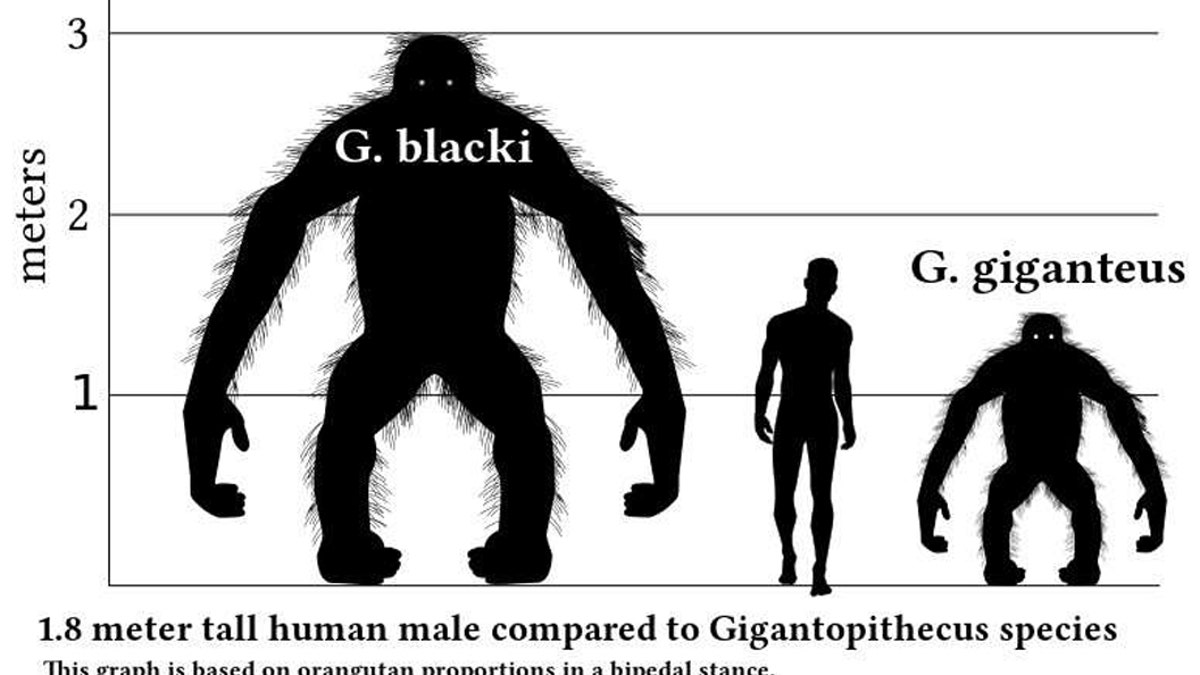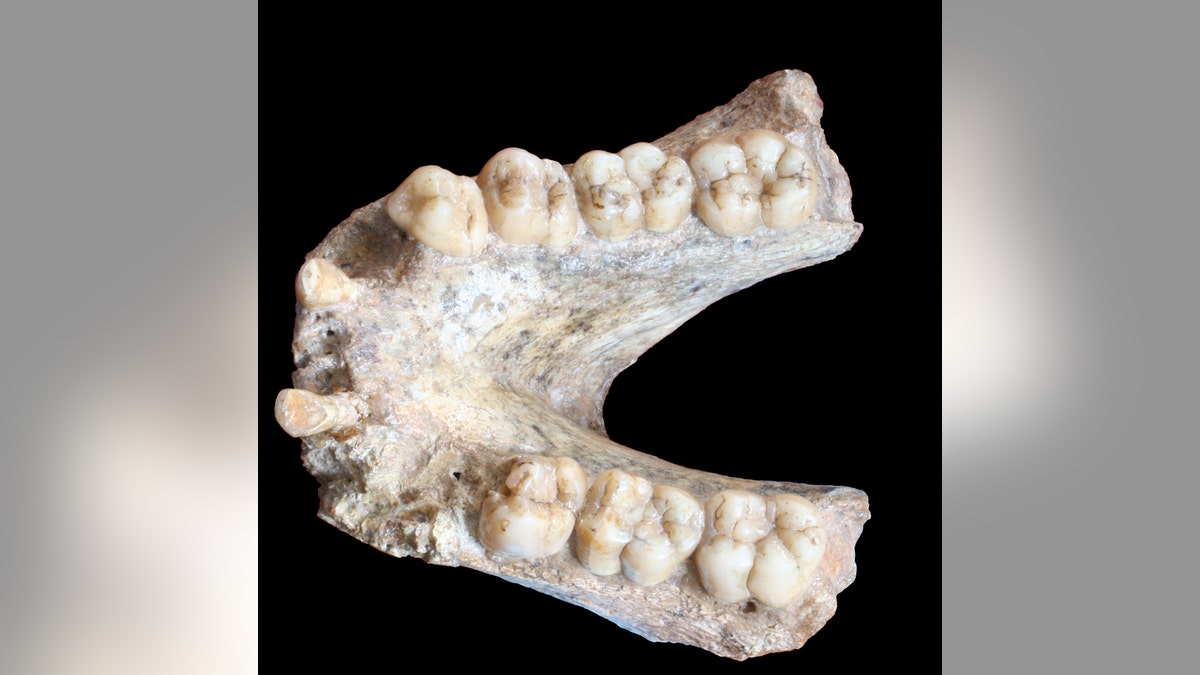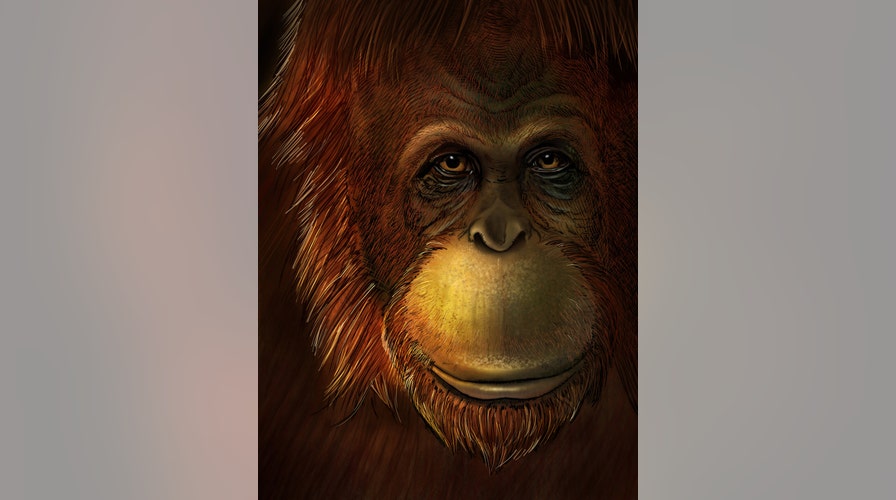Fox News Flash top headlines for Nov. 14
Fox News Flash top headlines for Nov. 14 are here. Check out what's clicking on Foxnews.com
The legendary Bigfoot has long been thought of as the "missing link" between apes and humans. In a stunning discovery, scientists have unearthed new evidence of the so-called "original Bigfoot," a 10-foot tall ape that lived nearly 2 million years ago.
Known as Gigantopithecus blacki, researchers discovered that the giant primate lived in southeastern China approximately 1.9 million years ago. They also found that the animal was related to the modern-day orangutan after they conducted groundbreaking, new analysis of proteins in tooth enamel.
"By sequencing proteins retrieved from dental enamel about 2 million years old, we showed it is possible to confidently reconstruct the evolutionary relationships of animal species that went extinct too far away in time for their DNA to survive till now," said one of the study's co-authors, Enrico Cappellini, in a statement. "In this study, we can even conclude that the lineages of orangutan and Gigantopithecus split up about 12 million years ago."

Artistic representation of Gigantopithecus blacki. (Credit: Ikumi Kayama, Studio Kayama LLC)
WATCH: HUNTERS CLAIM 'BIGFOOT' SIGHTING IN UTAH MOUNTAINS
The research also shows that G. blacki, which weighed up to 595 pounds, diverged from orangutans about 12 million years ago. Unlike chimpanzees or bonobos, it is not closely related to humans.

This is a comparison graph comparing the hight of a 1.8 meter tall human male with Gigantopithecus species. This graph is based on orangutan proportions in a bipedal stance. It is most likely that Gigantopithecus would have spent most of its time in a quadrupedal stance on all fours. (Credit: Discott)
"With this study, we show that we can use protein sequencing to retrieve ancient genetic information from primates living in subtropical areas even when the fossil is two million years old," the study's lead author, Frido Welker, added in the statement. "Until now, it has only been possible to retrieve genetic information from up to 10,000-year-old fossils in warm, humid areas."
Welker continued: "This is interesting, because ancient remains of the supposed ancestors of our species, Homo sapiens, are also mainly found in subtropical areas, particularly for the early part of human evolution. This means that we can potentially retrieve similar information on the evolutionary line leading to humans."

A Gigantopithecus blacki mandible (P1-M2=74mm). (Credit: Prof. Wei Wang; Photo retouching: Theis Jensen.)
'BIGFOOT' HAIR SAMPLES TURNED OUT TO BE FROM DEER, NEWLY RELEASED FBI DOCUMENTS REVEAL
It's widely accepted in the scientific community that the lineage between humans and chimpanzees split between 7 and 8 million years ago.
Fossils of G. blacki have been hard to find, with only four partial jaws and thousands of teeth having been discovered.
It's unclear exactly what G. blacki looked like, though recreations have painted it as an oversized orangutan, Live Science notes. Cappellini said the evidence they discovered doesn't provide them any information "about appearance, phenotype or biology."
The study has been published in the scientific journal Nature.

